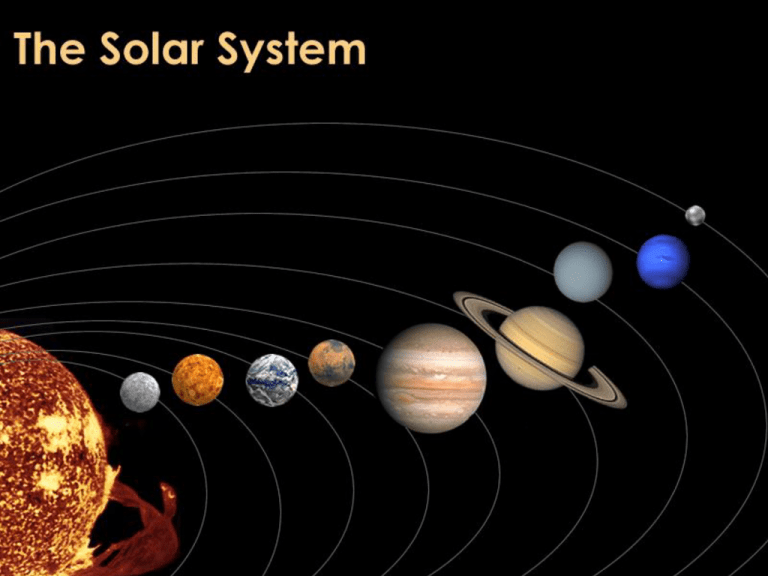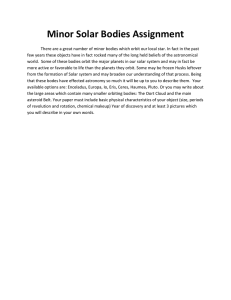Document 15554788
advertisement

The Sun Chemical composition: - Hydrogen = 92.1% - Helium = 7.8% - Rest of the other 90 naturally occurring elements: 0.1% How does the sun produce energy? 1) Energy is created in the core when hydrogen is fused to helium. 2) This energy flows out from the core by radiation through the radiative layer, by convection through the convective layer, and by radiation from the surface of the photosphere (the portion of the Sun we see.) Sun’s Energy and the Earth: The amount of energy that hits the Earth's surface is maximum at the point where the incoming radiation is perpendicular to the Earth's surface. The Sun’s External Rotation: The equator of the Sun rotates faster than the poles of the Sun. This is called the differential rotation. The Sun’s Internal Rotation: Hotter (red) and colder (blue) regions in the solar interior. Granules: Convection causes energy to rise to the surface as gas wells up in the cores of the granules, and cool gas sinks around their edges. Solar flares are tremendous explosions on the surface of the Sun. Solar prominences are dense clouds of material suspended above the surface of the Sun by loops of magnetic field. Corona is the light waves expanding into space filling the solar system with solar wind. Solar wind is the continuous flow of charged particles (ions, electrons, and neutrons) that comes from the Sun in every direction. Asteroids are small, rocky worlds. Most asteroids revolve around the sun between the orbits of Mars and Jupiter. (asteroid belt) Comets are “dirty snowballs” about the size of an earth mountain. They produce tails of gas and dust when they approach the sun. METEOROID: A piece of stone or metal that travels in outer space. METEOR: An object from space that becomes glowing hot when it passes into Earth's atmosphere. METEORITE: A piece of stone or metal from space that falls to Earth's surface. Homework… • Using the map in your Solar System Interactive Study Guide research and map with a variety of colored dots where meteors strike the planet Earth. Classification of Outer Space: - Many planets make up a solar system (sun and it’s planets) - Many solar systems make up a galaxy (milky way) - Many galaxies make up the universe What is a galaxy? A large group of stars, gases, and dust held together by gravity. There are nine (eight) planets: Mercury, Mars, Earth, Venus, Jupiter, Saturn, Neptune, Uranus, (Pluto) Terrestrial Planets (rocky, dense, metal core) Jovian Planets (light, gassy/liquid; H, He)

